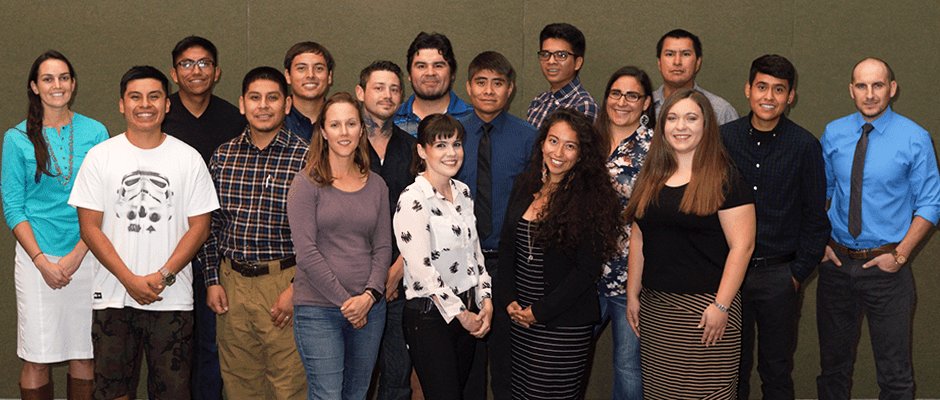Share this article
Increasing Native American participation in wildlife field
Across Indian country one can find beautiful areas of untrammeled land, more than 100 million acres, stewarded by people who value their natural heritage.
“As tribal people, our relationship with the natural world goes back thousands of years. We’ve evolved with these resources and have an ingrained cultural, spiritual and ecological connection with them,” says John Banks, director of the Penobscot Nation’s Natural Resources Department.
But Native Americans who do get natural resources degrees generally find work in tribal organizations and are underrepresented in the larger conservation world.
In October, the Service, U.S. Forest Service, USDA-APHIS National Wildlife Research Center and the Shakopee Mdewakanton Sioux community brought 16 Native American students to The Wildlife Society’s annual conference in an effort to change that.
“What we are trying to do is get more Native Americans engaged in The Wildlife Society,” says Scott Aikin, the Service’s National Native American Programs Coordinator. In turn, Aikin hopes that will “engage more diversity within the field of natural resources or fish and wildlife conservation.”
The students, all pursuing degrees in natural resources or fish and wildlife management, “really got a lot out of the conference,” Aikin says. The work the Service is doing to recover the Mexican wolf attracted a lot of interest, he says.
In addition to the wildlife aspects, the program allows students to share their experiences in the field, creating a kind of support network.
Talbrett Caramillo, a member of the Jicarilla Apache Nation attending San Juan College in New Mexico, told The Wildlife Society that at school “I just felt isolated. I haven’t met students here on campus that are really pursuing anything in wildlife.”
He told TWS that he had been thinking of leaving school. But after attending the conference, he said, “Being accepted is a big sign telling me to keep pursuing wildlife and stay in school.”
Aikin’s already excited about bringing students to Caramillo’s state next year. The conference’s in Albuquerque, New Mexico, which Aikin says will be “an excellent opportunity to engage a lot of Native American communities that live in and around the Albuquerque area.”
Because the Service places great value in increasing diversity within the agency, Aikin says he expects the program to continue “as long as we have the resources.”
This article originally appeared on the USFWS blog, Open Spaces.
The US Fish and Wildlife Service is a Strategic Partner of TWS.
Header Image:
Front row (left to right): Paige Schmidt (NSPD mentor and NPWMWG sec/tres), Alana Wilcox, Laura Lagunez, Ashley Archer. Middle row (left to right): Xavier Lovato, Daniel Bird, Brett Charles Stevenson, Bryan Begay, Celina Gray, Jacob Riley, Ty Werdel. Back row (left to right): Serra Hoagland (NSPD Program coordinator, NPWMWG Chair Elect), Talbrett Caramillo, Chase Voirin, Kyle Bobiwash, Grant Real Bird, Harlan Tso.
Not pictured: Brissa Christophersen








